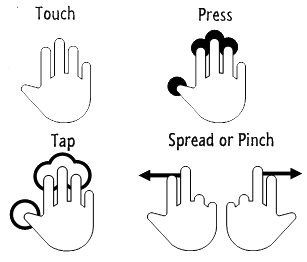| Ubuntu gets multi-touch that leaves the rest behind |
| Tuesday, 17 August 2010 | |||
|
Ubuntu's multi-touch stack shows the rest how it should be done and it seems the future has four fingers. Will the new API give Linux the edge on tablets and slates? It seems that multi-touch is everywhere - except of course on a desktop machine near you. The input craze that started on phones is migrating onto full scale operating system. Windows 7 has had multi-touch since it was released and the developer support in both WPF and Silverlight is improving all the time. Now Ubuntu is entering the game - multi-touch support will arrive in the next version of Ubuntu, 10.10, aka Maverick Meerkat. Cannonical has announced the release of uTouch 1.0 Ubuntu's multi-touch and gesture stack. It's open source so you can dig in and find out how it works. It also goes well beyond the sort of multi-touch framework you will find under Windows or mobile phone OSs. As well as the standard gestures - three-finger drag, two-finger resize and rotate etc. - It also allows gestures to be chained together to create more complex compound gestures. Ubuntu's founder Mark Shuttleworth says in his blog: "The design team has lead the way, developing a “touch language” which goes beyond the work that we’ve seen elsewhere. Rather than single, magic gestures, we’re making it possible for basic gestures to be chained, or composed, into more sophisticated “sentences”. This is an approach that other implementations could learn something from. You can use the API at a number of different levels from responding to individual finger touches through to working with complex gestures that have been well processed before your application has to deal with them. Indeed many simple gestures can be translated to mouse events and so handled without modification by frameworks such as Gtk.
The target seems to be the use of Linux on tablet/slate machines but there might be scope for full size desktop touch input if multi-touch pads become commonplace. The team also expresses a preference for four-finger touch rather than lesser two- or three-point touch. "With 4-finger capable pads, such as Apple's Magic Trackpad, you can use the full vocabulary of touch gestures"
So it looks as if the future is four-finger touch, with a side order of gesture chaining. It will be interesting to see if it does prove useful on the desktop and whether or not this gives Linux the edge on tablet/slate devices. Further ReadingProfessional Ubuntu Mobile Development
|
|||
| Last Updated ( Tuesday, 17 August 2010 ) |


